We have invested in the Crypto infrastructure and middleware projects so far.
We want to introduce "Modular Blockchain" concept as a new blockchain architecture design.
Modular Blockchain projects have gotten a lot of attention from an investment perspective. Projects in this area have raised a lot of money.
How the modular blockchain came into being
Blockchain design was initially monolithic (meaning monolithic Note 1), with a single blockchain performing all execution, settlement, consensus, and data availability.
e.g. Monolithic blockchains: Ethereum, Avalanche, Solana, etc.
However, as monolithic blockchains such as Ethereum have grown, it has become clear that they have limitations in terms of scalability to handle a large number of users and a vast number of transactions.
We have frequently experienced higher gas prices and transaction delays on the Ethereum when used by many users or when many transactions occurred, such as during the DeFi Summer of 2020 and the NFT Summer of 2021.
In response, Ethereum is looking to expand scalability with Layer 2 blockchain and Danksharding support, starting with the introduction of EIP-4844.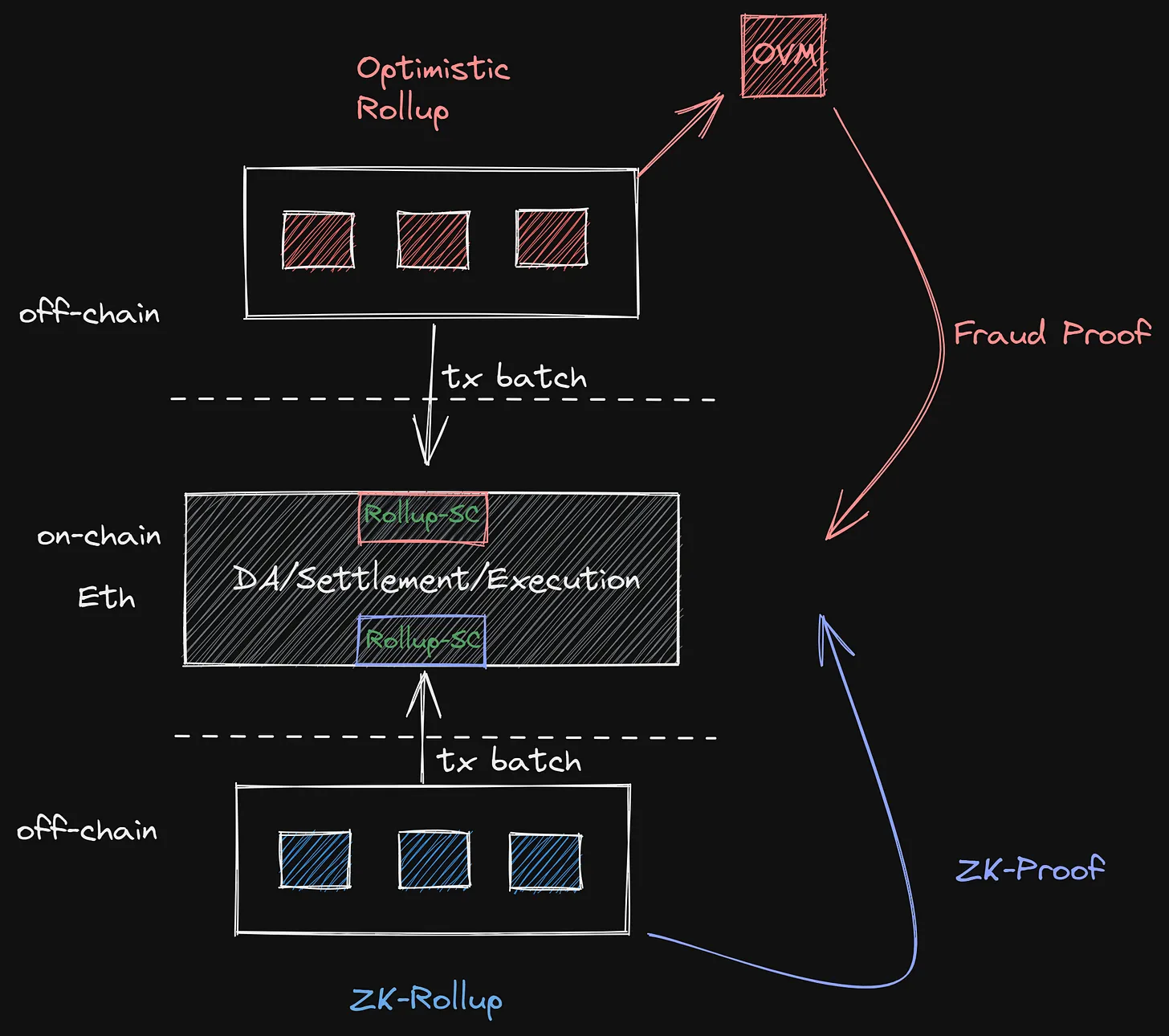
L2 Rollup, Source: "The Modular World" by Maven11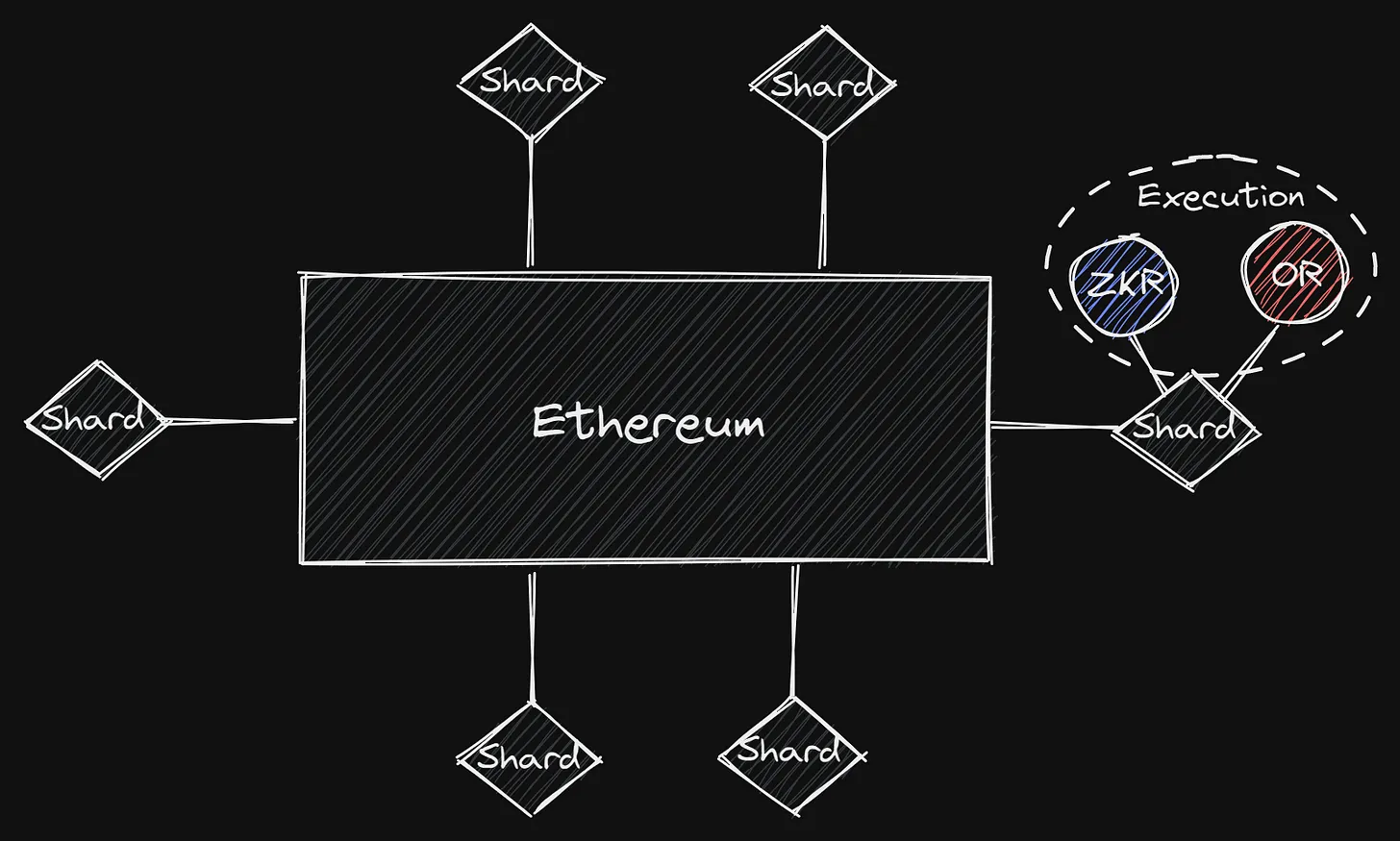
EIP-4844 Proto-Danksharding, Source: "The Modular World" by Maven11
This response led to the concept** of dividing the blockchain into separate functions without the need to do everything on a monolithic blockchain.
An evolution of this concept is the “Modular Blockchain."
The concept is that by unbundling the main functions of a layer 1 blockchain, we can make 100x improvement on the individual layers, resulting in a more scalable, combinable, decentralized system.
(Note: The monolithic vs. modular debate has been a recurring topic in the history of systems development for many years; there has also been a trend toward microservices in the development of Web2.)
Monolithic vs Modular
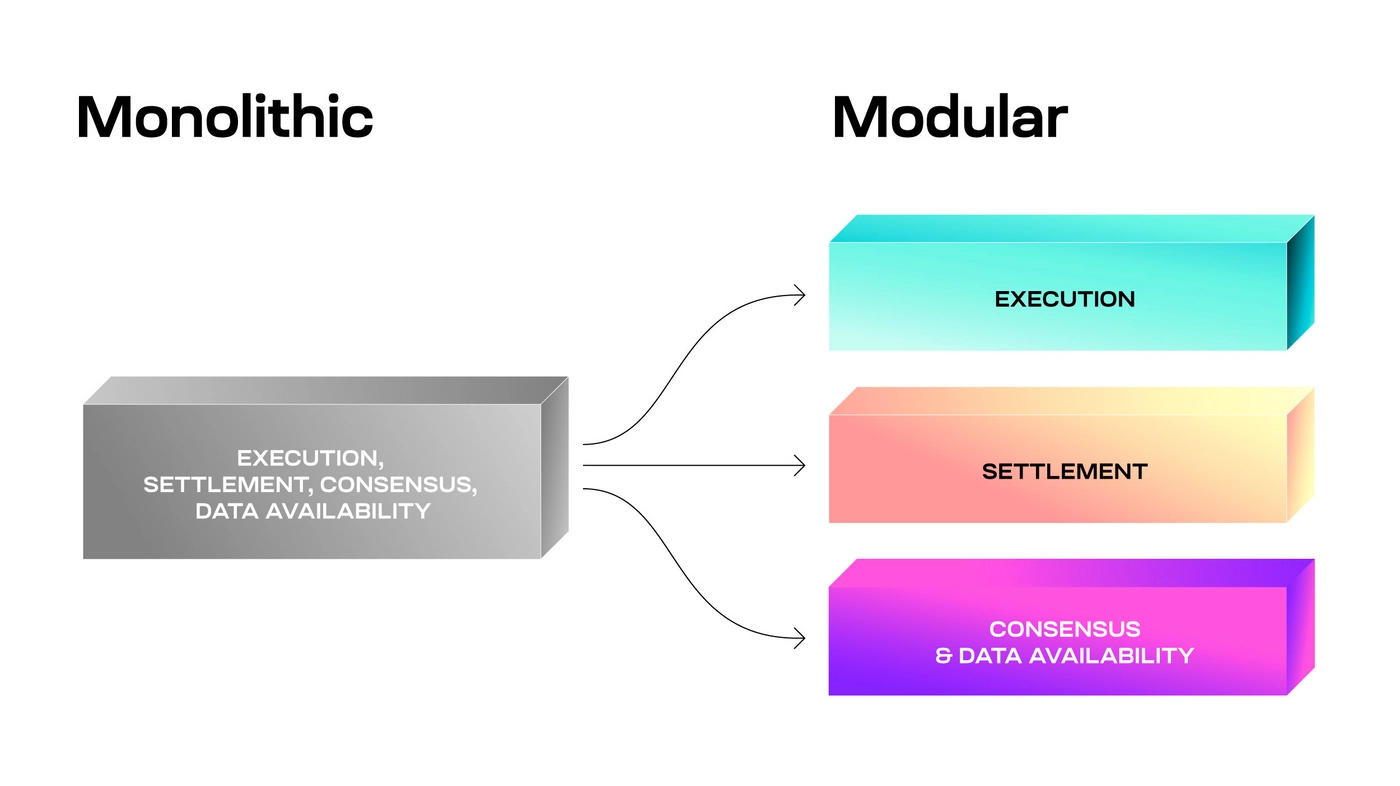
Source: Celestia
I will explain what exactly modular blockchain is, referring to Celestia's website. 1
First, let us define what we mean by "modular". It means that functions that are usually integrated are separated. In a blockchain, one of the functions of execution, settlement, consensus building, and data availability is decoupled.
A modular blockchain is designed to specialize in a function rather than trying to do all functions in one blockchain.
The concept is to create a more scalable and customizable system by combining blockchains specializing in each function required for the blockchain.
Modular blockchains are divided into the following functions.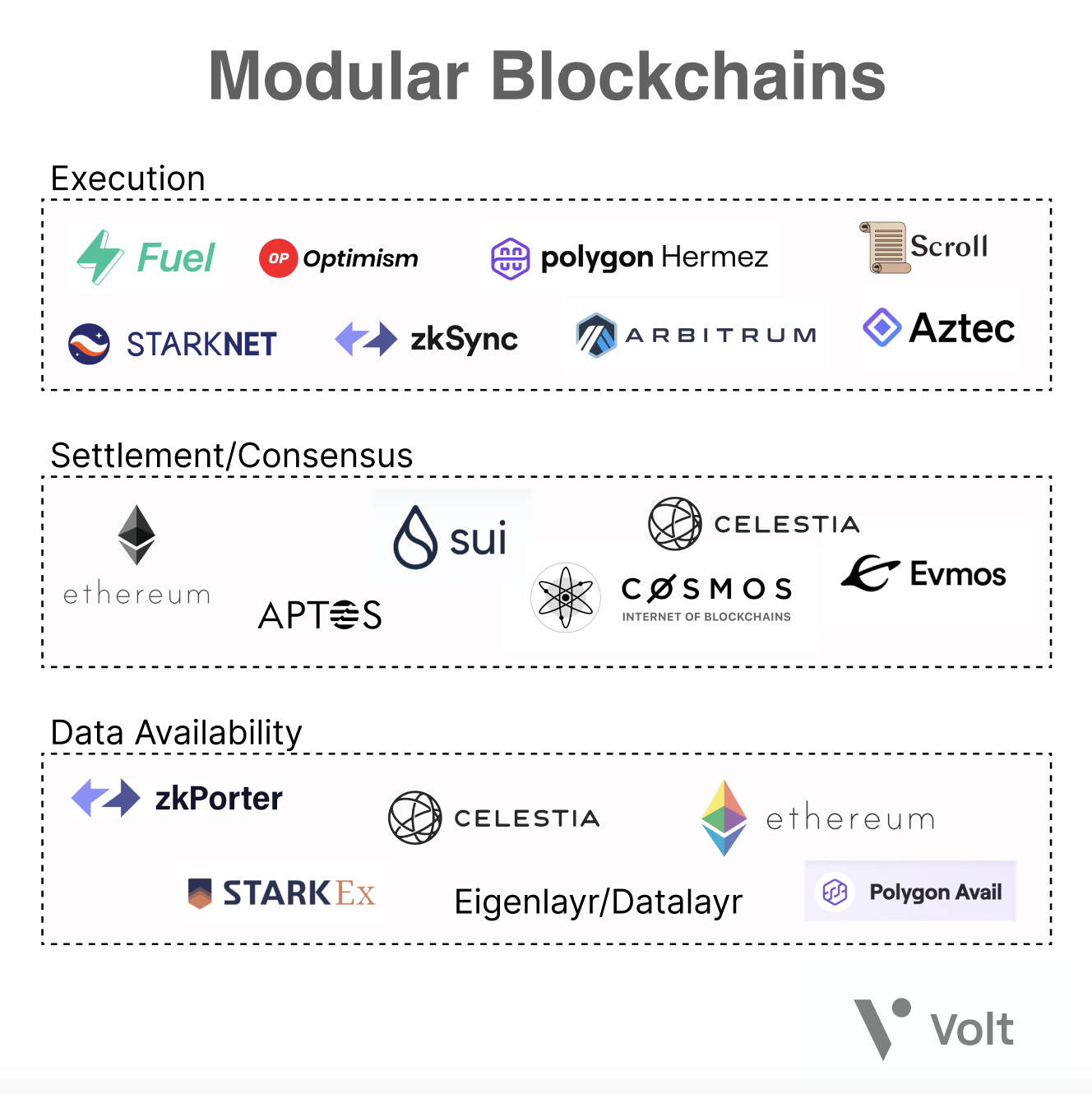
Source: "Modular Blockchains: A Deep Dive" by Volt Capital
- Execution: Processing changes in transaction status.
- Settlement: Proof verification and dispute resolution, bridge hub, and liquidity provision.
- Consensus: Provides ordering and finality.
- Data Availability: Storage and publication of data necessary to validate state transitions. Verification of data availability. This layer is the main bottleneck of blockchain scalability.
A monolithic blockchain, on the other hand, handles all of the above functions in a single blockchain. The following issues are recognized in monolithic blockchains.
- Stringent hardware requirements: Although monolithic blockchains can increase the number of transactions processed, they require higher hardware specifications for the nodes that validate the chain. This leads to increased costs. e.g. One of the reasons for Solana's high processing speed is the high hardware specifications of the nodes.
- Bootstrapping the validator set: When launching a new monolithic blockchain, validators must be collected to ensure security.
- Limitations of Control: dApps must follow the rules of the chain they are deployed to.
Next, let's look at types of the modular blockchain.
Smart contract rollup

Source: Celestia
A smart contract rollup is a blockchain that exposes the entire block to a payment layer like Ethereum.
Take the Ethereum rollup. For example the smart contract rollup takes the execution part. Ethereum handles settlement, consensus building, and data availability.
Source: Celestia
As the name implies, Smart Contract Rollup is a smart contract on Ethereum that performs block validation.
Since verifying transactions individually does not scale, proof efficiently verifies whether a block is valid (validity proof) or invalid (fraud proof).
Sovereign rollup
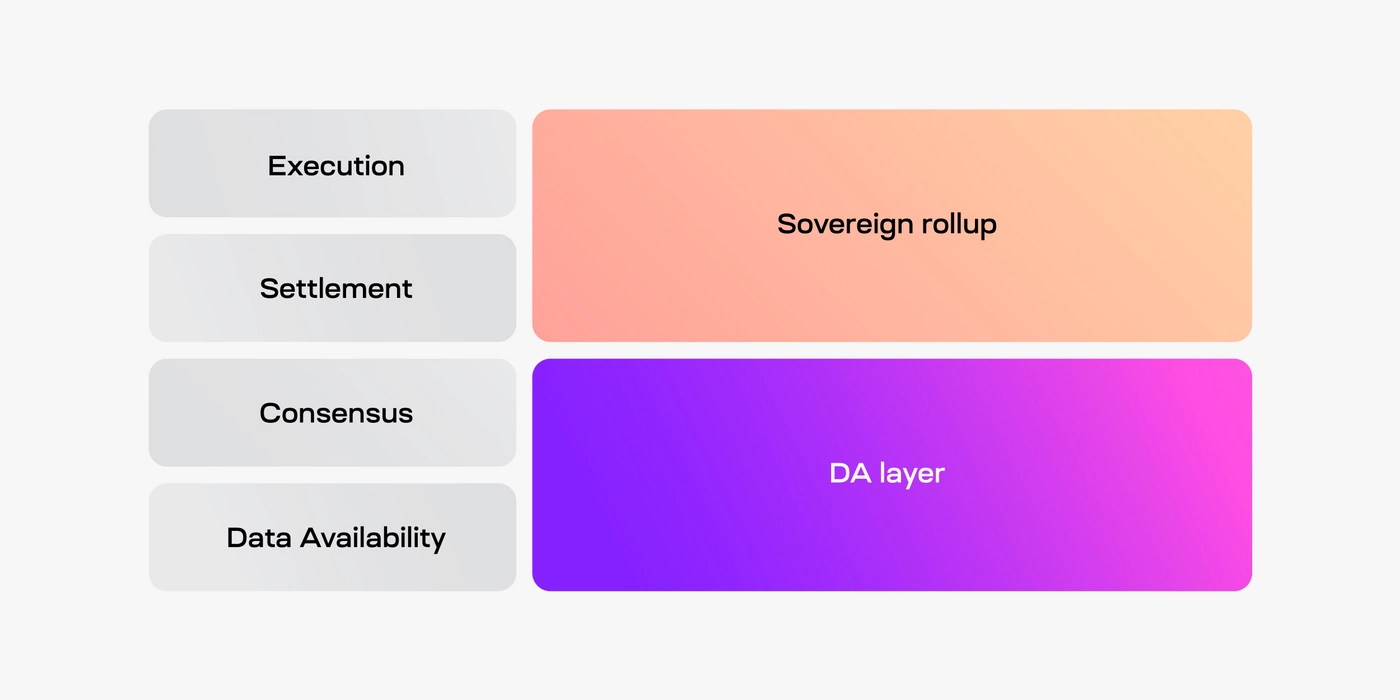
Source: Celestia
Sovereign rollups, as the name implies, are sovereign rollups.
It refers to a blockchain that publishes transactions to another blockchain for ordering and data availability layers, and you do settlements.
Like the L1 blockchain, it can be upgraded through forking. When forked, nodes can choose whether or not to update their software. This feature brings sovereignty.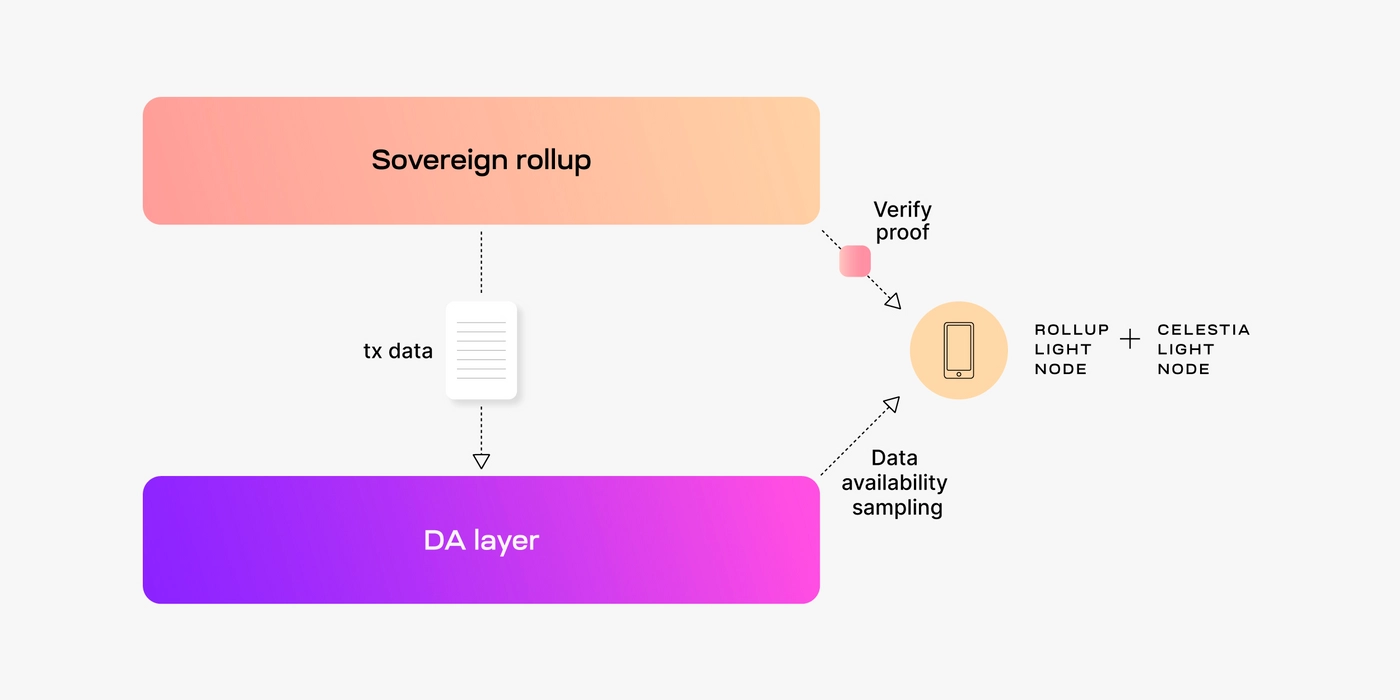
出典: Celestia
The Data Availability Layer does not validate transactions for sovereign rollups; the nodes that validate sovereign rollups are responsible for validating transactions.
Benefits of Modular Blockchain
Here are some of the advantages of modular blockchain.
Scalability
The basic concept of modular blockchains was to achieve scalability by separating each blockchain function as a modular so that each function could focus on improving it.
Modular blockchains like Celestia can specialize in data availability. Since there are no smart contracts, all L1 resources can be focused on L2, such as rollups, thereby increasing the data capacity that can be provided.
In a monolithic blockchain, the increased usage of some applications, such as DeFi Summer, will cause the gas price of transactions to skyrocket and transaction speeds to deteriorate for users of other applications. However, this problem does not occur in a modular blockchain world because the applications reside on separate chains.
Regarding the metrics for measuring scalability, Maven11 states the following. 2
When we talk about scalability the first thought that comes to mind from most people is usually transactions per second. However, this should not be the actual discussion being had around scalability.
When talking about scalability in a specialized DA layer it should rather be mb/s, instead of transactions per second which should be the major hurdle to overcome. Mb/s becomes an objective measure of the capacity of a chain, rather than tp's since transactions vary in size. Here Celestia stands quite well, since it unbloats the DA layer and utilizes data availability sampling to increase the amounts of mb/s the system can handle.
Ethereum aims to improve scalability with EIP-4844, but when that will happen, and how much scalability will be achieved in this discussion.
Celestia uses a mechanism called Data Availability Sampling to improve the amount of data it can handle (MB/sec).
Depending on the progress of Ethereum's EIP-4844, the competitive landscape for Celestia and other data availability layers will change.
Shared Security
Building your validator set is the biggest hurdle when launching a new monolithic blockchain. From a security perspective, Sufficient validator set is essential but very difficult to achieve.
For validators, being a validator for a new monolithic blockchain means investing in tokens and taking risks. Therefore, participation in new projects would be difficult.
In this regard, there is no need to start a new validator set in the modular blockchain world. New blockchains can be deployed on Ethereum, Celestia, etc., with a data availability layer, leaving the security aspects to you.
Sovereignty.
When an application is built on a monolithic blockchain, it must follow the rules of the chain it is built on.
For example, an application on Ethereum must follow the rules of Ethereum. Rules are social agreements, technical rules, etc.
In a modular blockchain, it is possible to control the rules that meet the requirements of each project/product with "sovereignty". For example, it is possible to build DeFi-specific chains (e.g., dYdX on Cosmos, Sei, etc.), NFTFi-specific chains (e.g., UnUniFi on Cosmos), gaming chains, etc., that require high throughput and low cost, which are rarely offered on monolithic blockchains. It is possible to build a chain specialized for gaming, etc.
Challenges of Modular Blockchains
We have had discussions with founders, developers, and investors of modular blockchains. While they have received a lot of attention, some have questioned the challenges that need to be solved and the usefulness of modular blockchains when they are assumed to be modular.
We believe decentralization, composability, and interoperability, critical elements of Crypto, must be ensured even in modular blockchains.
Let's take a look at the issues and discussions on modular blockchains.
Hidden Costs of Modular Blockchains
Kyle of Multicoin Capital, a prominent investor who has helped Solana, a monolithic blockchain, from its inception, writes, The Hidden Costs of Modular Systems.
Modular building blocks are great. But the key to building winning technologies is to figure out which pieces of the stack to integrate, and which pieces to leave for others. And as it stands now, chains that integrate DA and execution inherently offer simpler end-user and developer experiences, and will ultimately provide a better substrate for best-in-class applications.
The reasons for this are the following shortcomings of modular blockchains.
- Modular blockchains do not execute code fast enough
- Modularity increases transaction costs for users
- App rollups do not provide new monetization opportunities for developers
- App rollups do not address congestion between apps
- Flexibility is overrated
Interoperability
When the number of blockchains increases significantly due to modular blockchains, rollups, app-chains, etc., it becomes challenging to maintain the interoperability of different blockchains. Specifically, the following two problems can be identified.
State Fragmentation
Modular blockchains, where the application state is held in different execution layers, make retrieving and validating that data difficult.
Applications running on a monolithic blockchain do not have this problem because all contract state is stored on the same network. The problem may be further complicated when smart contracts are deployed on multiple blockchains, such as L1, L2, and L3.
The solution to this problem is messaging protocols.
A generalized messaging protocol allows arbitrary messages to be transferred between different chains. Messaging protocols solve state fragmentation by verifying and relaying packets of data between chains.
Protocols such as LayerZero, Axelar, Hyperlane, and Wormhole offer solutions as messaging protocols.
The leading standardized method for inter-chain messaging is Inter-Blockchain Communication (IBC), which is widely deployed in the Cosmos ecosystem. But the IBC developer experience needs to be improved for wider adoption.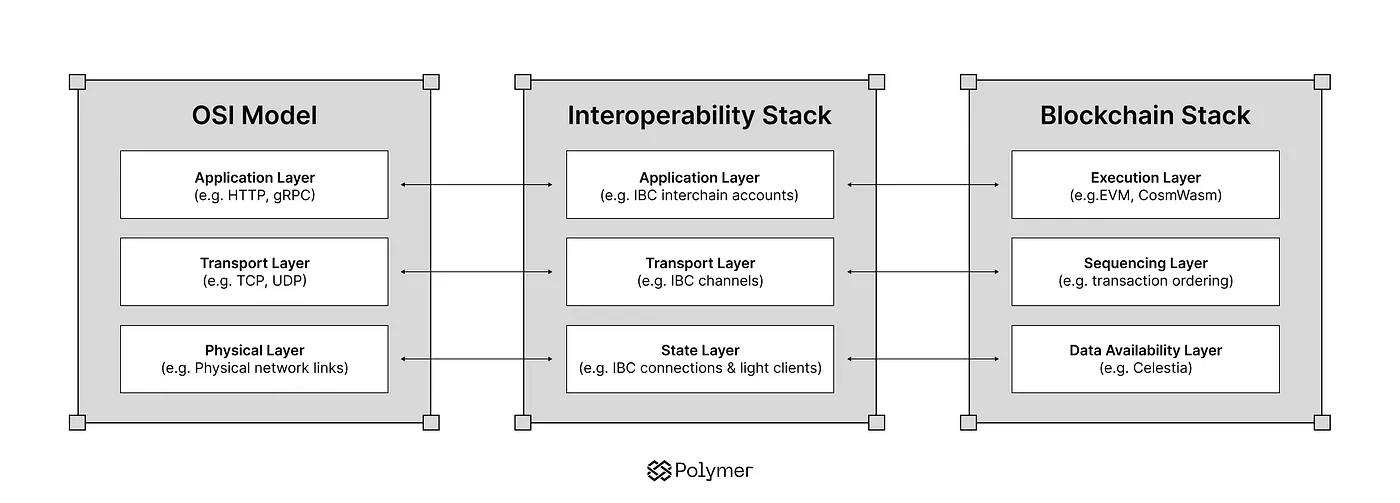
Polymer combines IBCs with zero-knowledge proofs and a Tendermint-based consensus engine to build a modular IBC transport hub. This enables communication between modular blockchains in a form that minimizes trust.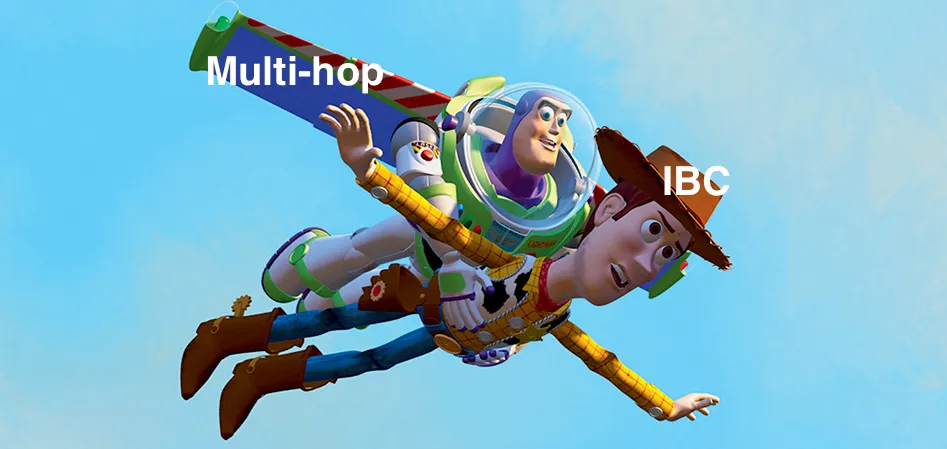
Currently, IBC connections are one-to-one with IBC channels; Polymer has made a multi-hop upgrade to change IBC connections to one-to-N with IBC channels. The exponential increase in the number of connections was changed to a linear change, thus reducing the cost of maintaining connections throughout the chain.
Disclosure: Polymer is a Tané portfolio project.
Fragmentation of Liquidity
Liquidity refers to the efficiency and ease with which assets can be bought and sold on optimal terms. Liquidity is very important for the DeFi project because it affects user slippage.
A monolithic blockchain DeFi project will not have liquidity issues because all users will trade on the same network. However, some chains' liquidity may be low if the project is deployed on multiple chains. (e.g., Uniswap has inferior liquidity outside of Ethereum)
Low liquidity may result in significant slippage or inability to handle large positions.
The solution to this problem is the Cross-Chain Liquidity Protocol.
Using a standard bridge to move assets involves many steps and a poor user experience. Cross-chain liquidity protocols such as Catalyst attempt to build a liquidity layer across cross-chains and provide a cross-chain AMM-like solution.
Disclosure: Catalyst is a Tané portfolio project.
The Future of Modular Blockchains
We have described the current status and challenges of modular blockchains.
Modular blockchains have emerged to solve the challenges of monolithic blockchains. However, many problems must be solved to make the modular blockchain world a reality.
Fast monolithic blockchains still exist. New solutions may emerge in the direction of integrating separate functions, contrary to the modularization trend of today.
Tané is actively working in Crypto infrastructure and has a strong network in Japan. We would be happy to talk with you if you are interested in us.
Special Thanks to Takeshi Ohishi
References
1 An introduction to sovereign rollups
2 The Modular World
3 The Hidden Costs of Modular Systems
4 Interoperability For Modular Blockchains: The Lagrange Thesis
5 The Multi-hop IBC upgrade will take IBC to Ethereum and beyond
Disclaimer: This post is for general information purposes only. It does not constitute investment advice or a recommendation or solicitation to buy or sell any investment. It should not be used to evaluate the merits of making any investment decision. It should not be relied upon for accounting, legal or tax advice or investment recommendations. This post reflects the current opinions of the authors. It is not made on behalf of Tané or its affiliates and does not necessarily reflect the opinions of Tané, its affiliates or individuals associated with Tané. The opinions reflected herein are subject to change without being updated.